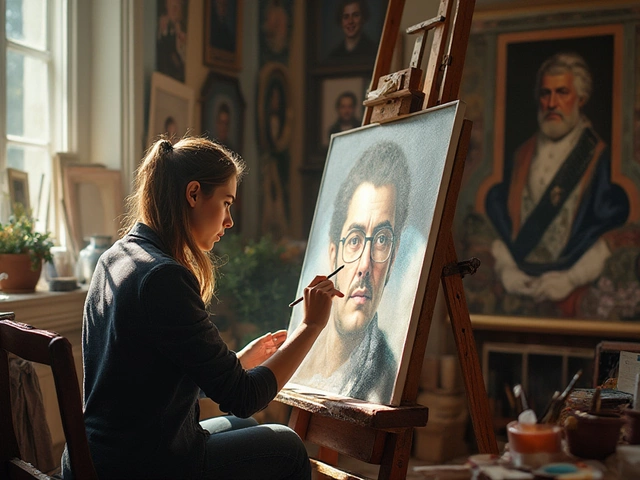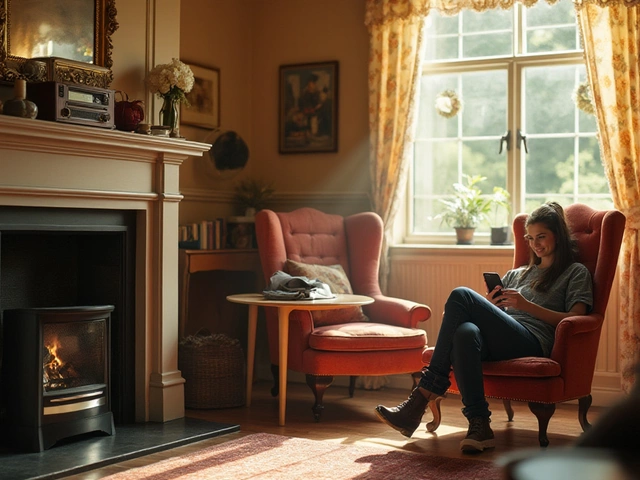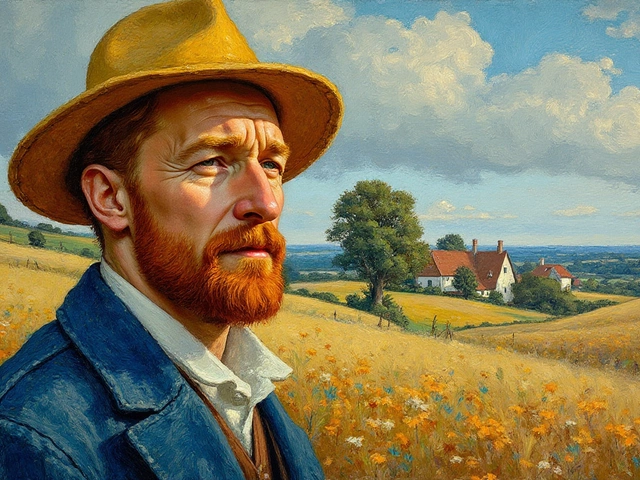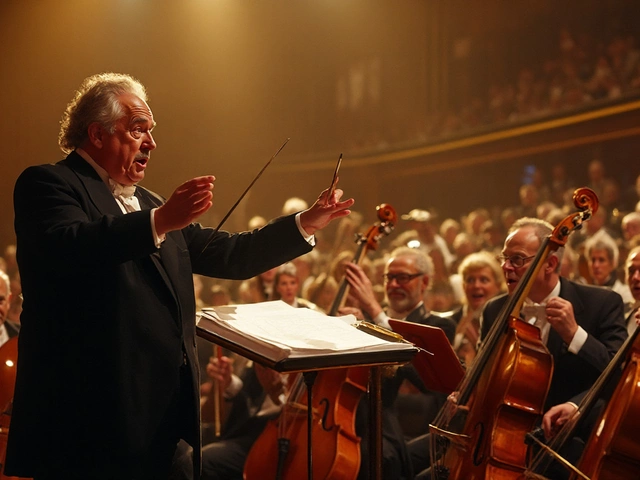Digital art has surged in popularity, acting as a canvas for the creative minds of today. But for someone trying to dip their toes into this world, it often sparks the question: is digital art easy for beginners?
In this engaging exploration, we'll uncover the different layers of digital art, from choosing the right tools to understanding the techniques that can transform ideas into visual marvels. Step into this journey with an open mind, appreciable patience, and a flair for experimentation. Who knows, you might discover a passion for sweeping digital brush strokes amidst your adventures.
- What Is Digital Art?
- Essential Tools and Software
- Drawing Techniques for Beginners
- Free vs. Paid Resources
- Common Challenges and Solutions
- Tips for Artistic Growth
What Is Digital Art?
Digital art spans a fascinating realm where creativity meets technology, transforming traditional forms of art into something dynamic and limitless. Unlike conventional mediums, digital art uses computers and software to create or manipulate artwork. It incorporates elements like animation, video, and interactive graphics, expanding the boundaries of how we express art. This form of art is not confined to a single canvas or medium, allowing aspiring artists to explore and experiment with different techniques and tools. As technology advances, so does digital art, which continuously evolves, offering new ways for expression. Many traditional artists are now embracing this medium, discovering the freedom it provides in terms of flexibility and ease of sharing.
The beauty of digital art lies in its accessibility. For beginners, it offers a relatively affordable entry into the art world since various tools and software are available either for free or at a reasonable cost. Platforms such as Procreate, Adobe Photoshop, and Krita are popular, catering to different skill levels, from novice to professional. For many, the digital aspect removes the fear of making irreversible mistakes—artworks can be edited, enhanced, or completely revamped at any stage of the creative process, which encourages the artist to take risks and push their boundaries. It's a transformative way to learn without the typical constraints of traditional art forms.
"Digital art allows for the unfolding of creativity that can bridge the gap between technology and art," says Alex Garcia, an esteemed art professor. The quote encapsulates the essence of this type of art—bridging gaps and connecting worlds that once seemed separate.Much of its appeal comes from its ability to democratize art-making; anyone with a computer or tablet can dive into this universe. Online communities and platforms provide vast resources ranging from tutorials to peer feedback, enabling growth and collaboration. In today's interconnected world, digital art also allows for instant sharing and showcasing to global audiences through social media and online galleries, where an artist’s portfolio can reach countless people with just a click.
For aspiring artists looking to develop their skills, digital art presents a learning curve that is tied closely to one's dedication and creativity. While mastering the tools is essential, the true art rests in how these tools are used to convey a message or evoke emotion. As you delve deeper, the digital art world offers endless resources and support to refine your techniques and develop a unique style. It's an exciting time to embark on a digital art journey!
Essential Tools and Software
Delving into the realm of digital art begins with understanding the fundamental tools and software crucial to your creative journey. With a plethora of options available, choosing the right combination can be both exciting and daunting. Arming yourself with the right gear is akin to choosing the correct brush for a canvas. For beginners, the choice often revolves around software accessibility, intuitive interfaces, and versatility in features.
Among the leading contenders is Adobe Photoshop, known for its extensive features suited for beginners and professionals alike. Its array of brushes, layers, and effects provide a sandbox for exquisite creativity. However, it can be overwhelming at first, requiring time to master even its fundamental functions. On the opposite end, Procreate is a favorite among iPad users for its user-friendly interface and fluid performance. Specially optimized for touch, its tools make sketching and painting feel natural. For those in search of a free alternative, Krita stands out by offering pro-level tools without a price tag. It's an open-source platform, constantly updated with community-driven enhancements.
Hardware plays an equally crucial role in digital creation. A graphics tablet can dramatically change the experience, making the digital interface more responsive to the natural nuances of hand movements. Whether opting for a basic drawing pad or a high-resolution pen display like the Wacom Cintiq, a good tablet can transform how you interact with your art. Yet, what's often overlooked is the importance of having a computer with sufficient specifications to run these applications smoothly.
"Procreate’s strongest asset is its Project Gallery... " - CreativeBloq
For those who prefer collaborative creation, web-based platforms like ArtRage and SketchBook, by Autodesk, offer cloud integration and cross-platform capabilities. These tools often provide ample storage and syncing features which are invaluable for artists on the go. Balancing between free and paid options may depend on the scope of your dedication and budget. Nevertheless, investing in reliable software is a crucial step in channeling your creative juices efficiently.
When deciding on the right toolset, consider your art style and workflow preferences. Experimentation can most certainly lead to unexpected discoveries, fostering growth and confidence through trial and error. There's no one-size-fits-all in the world of digital art; as your skills evolve, so might your tools. Whether wielding a stylus or navigating a trackpad, each artist's touch carries the potential to design unique digital masterpieces. Recognizing and aligning these factors sets a foundation upon which artistry can flourish.
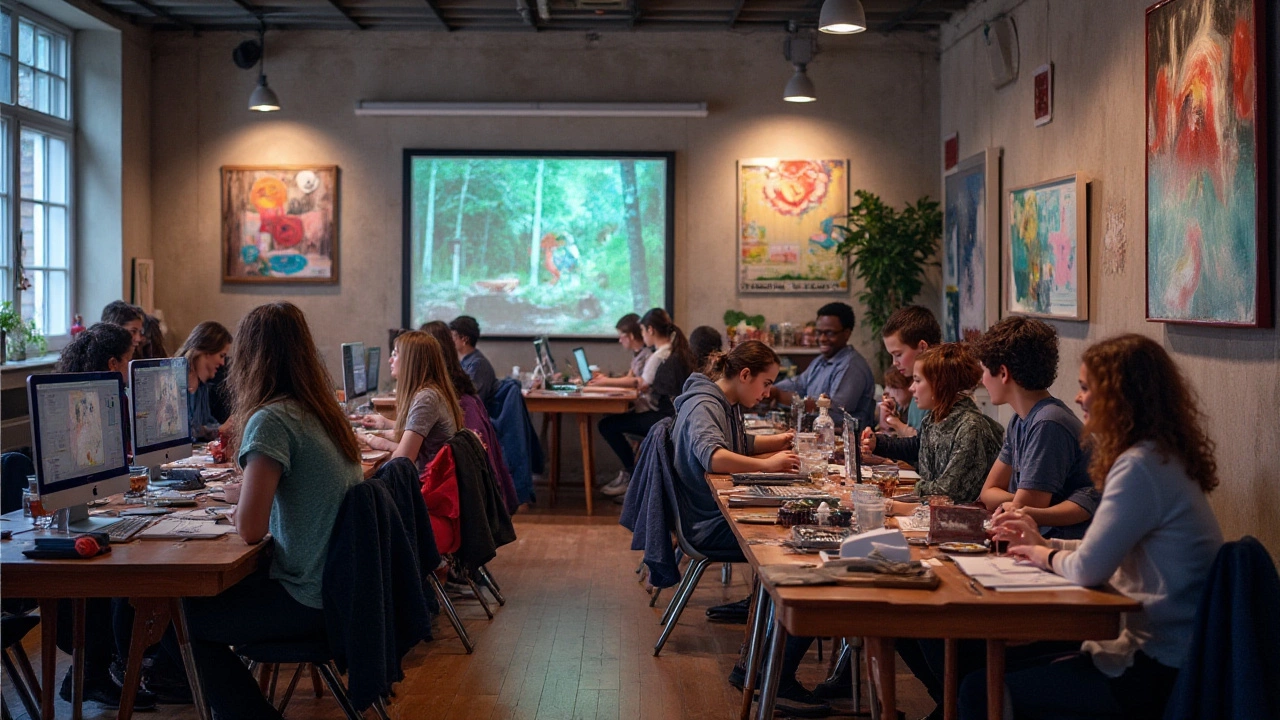
Drawing Techniques for Beginners
Diving into the world of digital art can initially seem daunting, especially with so many tools and techniques at your disposal. However, understanding some foundational drawing techniques can simplify your path. One of the initial steps is to become comfortable with your chosen drawing software. Many people begin with programs like Procreate, Adobe Photoshop, and Krita, each offering unique features. To maximize these tools, familiarizing yourself with shortcuts can greatly enhance productivity and creativity. Customizing brushes and experimenting with different textures can be a game-changer and can make your work distinctively yours. Layering is another critical technique; it allows for immense flexibility by enabling artists to separate elements and adjust them independently without affecting the entire piece.
Sketching is paramount for any artist, whether traditional or digital. Starting with rough sketches helps to lay down the initial idea and gradually refine it into a more structured design. The pressure sensitivity of a tablet stylus mimics the action of a pencil on paper, facilitating a more natural transition for beginners transitioning from traditional to digital art. Many artists recommend keeping your initial sketches light, then progressively building up the details. Color theory plays a significant role in digital art; understanding the interplay of various colors and how they can be harmonized or contrasted is vital. Start by experimenting with color schemes and notice how different combinations can convey emotion and mood. Using tools like the color picker can refine your palette creation.
“A good digital artist does not need to know everything,” advises well-respected artist Aaron Griffin, “but should instead focus on mastering one aspect at a time.”
A crucial tip is to avoid the habit of undoing every mistake immediately. Observing the imperfection can teach valuable lessons and often leads to unexpected creative directions.When starting, practicing patience is as essential as technique itself. Developing an eye for detail and honing your observation skills can significantly enrich your art. Noticing how light interacts with subjects or how small variations in texture can enhance a piece are integral skills. Sharing your progress with peers and mentors and being open to constructive criticism can provide insights that might not be apparent when working in isolation.
Here's a simple exercise to start improving your digital art proficiency. First, create a new canvas in your chosen software. Begin by sketching basic geometric shapes like circles, rectangles, and triangles with varying levels of pressure to understand the sensitivity of your stylus. Then use layers to add shadows and highlights. These exercises are not just practice of motor skills; they help ingraining layers' usefulness. Regular practice of such exercises builds confidence and skill in using your chosen digital tool, laying a robust foundation for further artistic growth. Provided with time, practice, and experimentation, digital art becomes not just easy but an exciting and fulfilling endeavor.
Free vs. Paid Resources
When venturing into the world of digital art, one of the primary considerations is the type of resources to utilize. The availability of both free and paid tools can make this decision challenging yet crucial for a budding artist. Free resources like Krita and GIMP offer a comprehensive introduction to digital art creation without any upfront cost. They come with a variety of brushes and layers, allowing enthusiasts to experiment without financial commitment. On the other hand, the professional circles often turn to renowned software such as Adobe Photoshop or Corel Painter. These paid resources deliver advanced features and regular updates that can elevate digital art to new heights.
Free tools, while lacking some sophisticated functionalities of their paid counterparts, hold a unique charm. They cultivate a spirit of learning and adaptability. These tools often have active communities where users share tips, tutorials, and even custom brushes, enriching the art creation experience. However, stepping into paid resources can open up a world of convenience and precision not easily found in free versions. Adobe's extensive range not only offers Photoshop but its ecosystem supports vector graphics through Illustrator, video editing with Premiere Pro, and more. Each tool integrates seamlessly, supporting a more unified workflow for digital artists.
"The best artist has no conception that a marble block does not contain within itself." — Michelangelo
This quote resonates deeply with digital artists, highlighting that tools, whether free or paid, are merely enablers of creativity that already exists within the artist. When choosing between these resources, consider personal tendencies, learning preferences, and project requirements. Free resources might be perfect for exploration routes, allowing you to gain confidence before gradually incorporating paid ones based on your comfort and necessity. Paid software often comes with extensive support, step-by-step guides, and ready-to-use templates, providing premium assistance to refine your craft. Ultimately, what tools you use should align with your creative objectives and the skills you aim to develop.
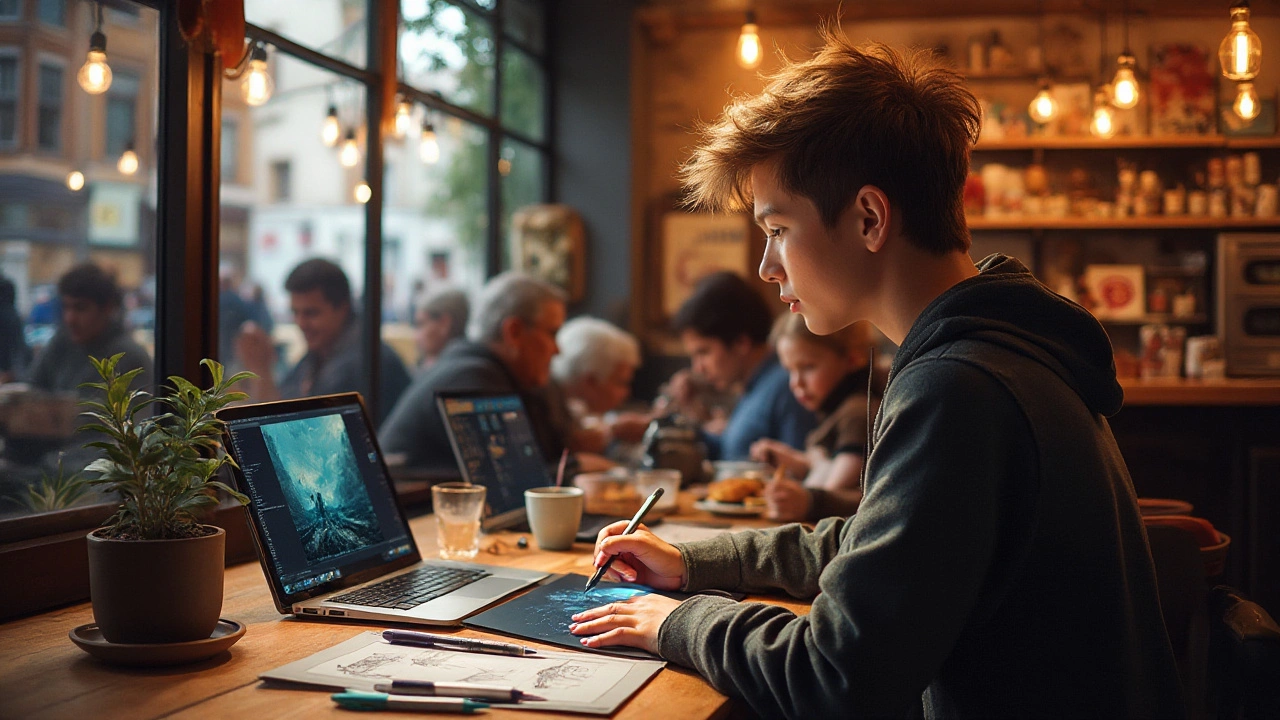
Common Challenges and Solutions
Embarking on a journey into digital art can be an exhilarating experience, though it's not without its hurdles. Aspiring artists often encounter a variety of challenges, ranging from technical difficulties to creative blocks. One of the prominent challenges is mastering the myriad of available tools and software. For a beginner, navigating programs like Adobe Photoshop or Procreate can feel overwhelming due to the vast array of features and settings. It's easy to get lost in technical details, which might dampen initial enthusiasm. To tackle this issue, start by exploring beginner-friendly tutorials available online that focus on the basics. These resources break down complex functionalities into manageable steps, enabling you to gradually build your understanding without getting discouraged.
Another common hurdle is developing a personal style amidst the endless sea of digital possibilities. Many beginners find themselves mimicking the styles of established artists, which can lead to frustration when their own work doesn't seem original or satisfactory. However, imitation is a natural part of the learning process. Aim to experiment with different styles and techniques; over time, this practice will help you forge a unique artistic identity. In this realm of trial and error, patience is a virtue. Remember the words of the esteemed painter Paul Cézanne:
"The most seductive thing about art is the personality of the artist himself."This quote serves as a reminder that your individual perspective is invaluable, even when influences from others seem prominent.
Pencil in other barriers such as creative blockages that can stall your artistic journey. When inspiration dries up, it’s crucial to seek motivation beyond the constraints of your screen. Engage with various forms of art, both digital and traditional. Visit galleries, read art blogs, or join online communities where you can share experiences and gain insights. Connecting with fellow artists can reignite your creativity by exposing you to fresh perspectives and creative solutions. Furthermore, consider developing a practice of daily sketching or setting small, achievable goals to maintain your momentum. Remember, consistent practice is key to overcoming creative hurdles.
Additionally, newcomers to digital art might struggle with the technical side of creating their first piece. Issues such as file management, understanding resolution settings, or dealing with color calibration can be intimidating. It's helpful to take the time to learn these technical facets, which ensure that your artwork is not only beautiful but also technically sound. Look to online forums and digital art communities for guidance, where seasoned artists often share invaluable tips and tricks. These platforms can greatly speed up your learning curve.
Many budding artists also face the challenge of staying motivated amidst criticism or self-doubt. Art is highly subjective, and feedback can range from constructive to harsh. Developing resilience is crucial. Focus on feedback that offers insights for improvement, and remember that every artist was once a beginner. Responding to criticism with an open mind and a determination to improve can be one of the most rewarding aspects of your artistic development. Consider a quote from Vincent Van Gogh, who said,
"If you hear a voice within you say you cannot paint, then by all means paint, and that voice will be silenced."This sentiment encourages pushing through doubt and continuing to create.
For those grappling with financial constraints, deciding between free and paid resources can be daunting. Fortunately, numerous high-quality free tools and softwares are accessible, offering a great starting point without significant investment. Programs such as Krita and GIMP provide robust features without the cost barrier, making them excellent choices for beginners. As you progress and become more confident in your digital art journey, investing in paid software could be advantageous for access to advanced features and support.
Understanding and overcoming these challenges is key to growing as a digital artist. By acknowledging these common hurdles and adopting practical strategies to tackle them, the path becomes smoother and more fulfilling. Armed with the right information and the willingness to learn, beginners in digital art can transform their initial challenges into stepping stones towards artistic success.
Tips for Artistic Growth
Embarking on the journey of digital art demands not just a willingness to learn, but a conscious effort to grow every day. Growth in art, like in life, is often driven by curiosity and experimentation. Among the many avenues to explore, diversifying your inspiration can breathe new life into your creative process. Keep an eye out for artworks across different mediums — not just digital but traditional as well. Observing the strokes in an oil painting or the textures in a piece of sculpture may inspire unique techniques in your own digital creations. It's key to break free from the echo chamber and seek diverse forms of artistic expression that can enrich your perspective.
The importance of continuous practice cannot be overemphasized. Practicing regularly is a trusted method to refine one's ability in digital art. Even if you can dedicate only 15 to 30 minutes a day, those minutes accumulate, building your skill and confidence over time. Variety in your practice is just as essential. Tackle different subjects and styles to avoid monotony and challenge your current understanding. Delve into the world of line art one day, and the richly colored world of digital painting the next. Each style feeds into the other, creating a holistic growth experience.
Feedback is an often underutilized tool for beginners. Artists sometimes shy away from criticism, but constructive feedback is invaluable for identifying blind spots in your techniques. Engage with art communities online or in-person, where artists share insights without reservation. Having an external pair of eyes examine your work can reveal areas of improvement that might not have been apparent on your own. Embracing feedback with an open mind can propel your artistic growth in unexpected directions.
"The day you stop learning is the day you stop creating," says digital art pioneer, Craig Mullins.
Harnessing the wealth of online tutorials and educational content can also fast-track your learning process. Platforms like YouTube, Skillshare, and Coursera have democratized education, offering sessions by professionals in the industry. Whether you want to learn the nuances of a specific tool in your preferred art software or understand color theory, there's content waiting for you. These resources allow you to learn at your own pace, filling in knowledge gaps with structured guidance.
Reflection is yet another component of growth. Regularly revisiting your past works can provide a clear picture of your evolution as an artist. Sometimes, it is only when looking back that you can appreciate the strides you've made. This practice not only motivates but also sheds light on habitual mistakes you might make, guiding your future efforts. By cultivating these habits, the path to becoming an accomplished digital artist becomes less daunting and filled with opportunities for self-discovery.
Networking and Community Engagement
Don't underestimate the power of networking in the art world. Being part of digital art communities can open doors to collaboration, getting your work noticed, and even job opportunities. Social media platforms like Instagram, ArtStation, and DeviantArt are places to exhibit your works and communicate with other artists. Turn these platforms into interactive spaces where you share insights, seek advice, and curate inspiration. Strong networks can provide the external support system needed to push your boundaries in creativity.
Ultimately, the journey in digital art is as much about personal growth as it is about accumulating skills. Set clear goals for yourself and celebrate your achievements, no matter how small they seem. Each piece you complete, each skill mastered is a testament to your dedication. With perseverance, a thirst for knowledge, and heart, you’ll find the world of digital art ready to yield its enchanting possibilities.

